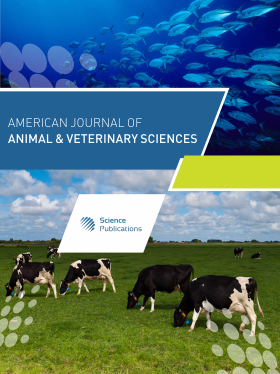Seroprevalence of Neospora Caninum in Stray Dogs
- 1 Islamic Azad University, Iran
Abstract
Problem statement: To investigate anti-Neospora caninum antibodies in stray dogs living in Tabriz city, 100 blood samples were collected. Serum samples were screened for detection of anti-N. caninum IgG antibodies using Indirect Fluorescent Antibody Test (IFAT; ≥50). Antibodies were seen in 31 (31%) of 100 dogs. Approach: The IFAT antibody titers were as follows: 1:50 in 11 dogs, 1:100 in ten dogs, 1:200 in six dogs, 1:400 in one dog, 1:800 in two dogs and 1:1,600 in one dog. There were no significant differences in seroprevalence of Neospora infection between different genders (p>0.05). The seropositive results were increased with age and differences were statistically significant (p<0.05). Results: The results confirm the presence and exposure of stray dogs to N. caninum in Tabriz city and importance of this protozoan as a cause of disease in dogs of the region. Conclusion: Based on the present study, this is the first report on seroprevalence of N. caninum in stray dogs of the Tabriz northwest of Iran. This finding confirms the presence of Neospora infection and the important role of dogs in the region.
DOI: https://doi.org/10.3844/ajavsp.2011.100.104

- 6,309 Views
- 5,077 Downloads
- 3 Citations
Download
Keywords
- Higher seroprevalence
- Neospora caninum
- blood samples
- serum samples
- statistically significant
- buffered saline
- fluorescent antibody test
